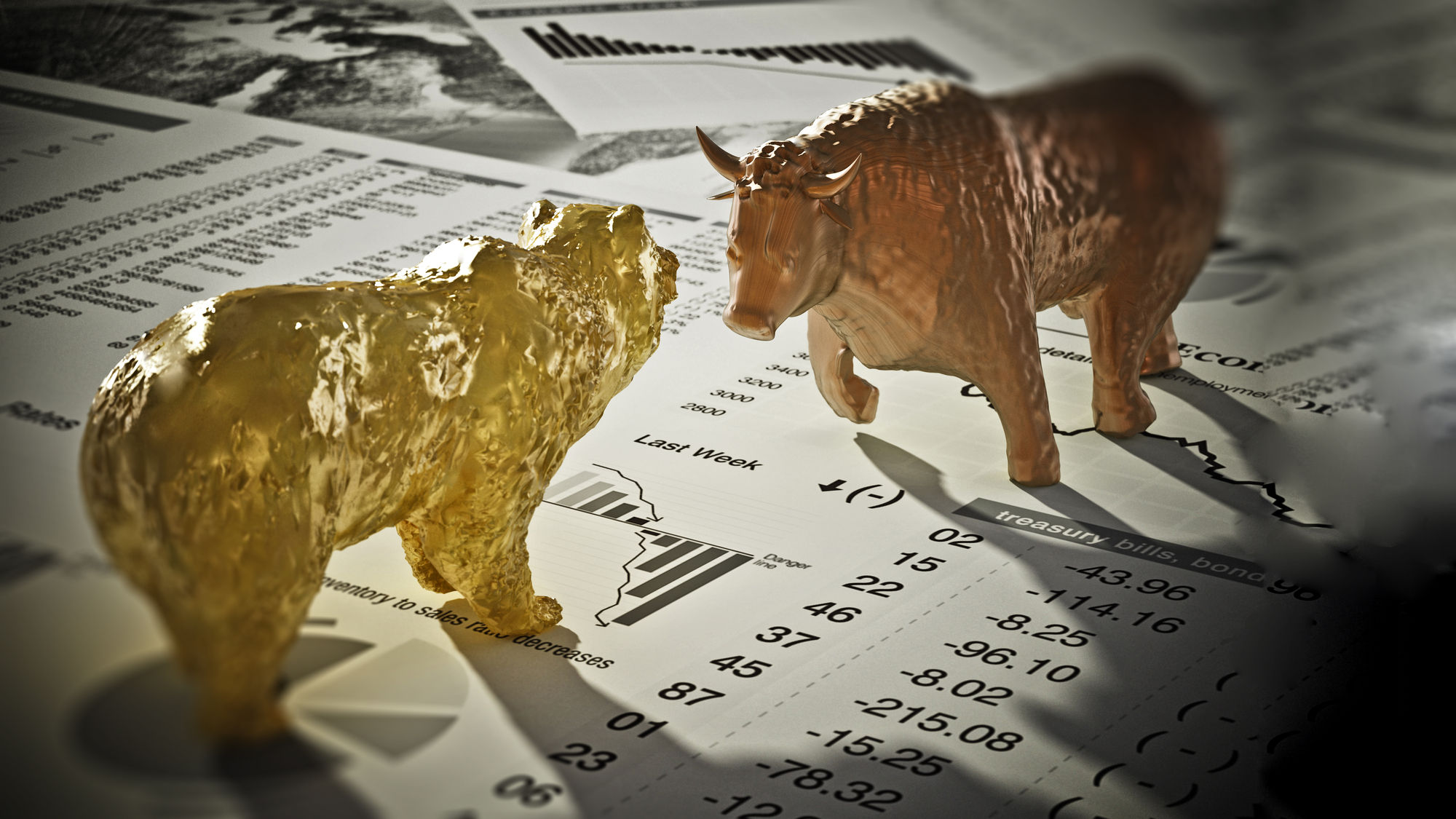The term bull market, or bull run, refers to an upward trend in the value of an asset, like a cryptocurrency. A crypto bull market often follows an aggressive upward direction reflecting rising prices in a fairly short time window.
Understanding what a bull market is and how to navigate a bull run is key to making informed investment decisions. In this guide, we will take a look at everything you need to know about bull markets, how they work and how to invest during a bull run.
Understanding Bull Markets
A bull run represents the upward trend in the value of a cryptocurrency. The term is borrowed from traditional stock market, but cryptocurrencies deal with much larger margins of increase as they are traded in much smaller and more volatile markets.
While stock market may consider a 20% increase as bullish behavior, cryptocurrencies are much more volatile, meaning that even a 40% increase in value is possible in the span of one or two days.
A bull market reflects confidence in the asset, which can be attributed to the product’s performance or other market indicators.
Bull and Bear Markets: Differences
The terms bull and bear markets are borrowed from the traditional stock market terminology.
A bear market is the exact opposite of a bull market, and it follows a downward trend in the trust in the asset and value, characterized by pessimism regarding the markets. It’s often called the seller’s market, as investors increasingly cash out and subsequently drive the asset’s price down. In bear markets, supply (sellers) typically outweigh demand (buyers).
A bull market is also referred to as the buyer’s market; it represents confidence in the asset and markets and channels optimism instead. As it’s said often, bull runs can’t last forever: markets typically follow a cyclical pattern of bull and bear periods where buyers and sellers are more active, respectively.
Although the crypto market is still very new, compared to the stock market, it has already experienced 3 major bull cycles which were 2011-2013, 2015-2017, and 2019-2021. Many investors believe that we are currently in the midst of the most recent bull cycle, which started at the beginning of 2024.
Understandably, most investors hope to catch a bull market during the early stages, to take advantage of the growth that is to come. This is sometimes known as ‘timing the market‘ – it is tricky but can be very profitable!
Spotting a Bull Run in Crypto Markets
A bull market typically emerges following sustained periods of sellers exiting the market and stock prices being flattened out. This phase is referred to as accumulation, where long-term investors hope to buy in bulk for low prices and hope for a bullish rise.
The next phase, called markup, marks the beginning of a bull market: buyers increasingly enter the market, and demand begins to outpace the supply. This places upwards pressure on the price of an asset.
Looking at current cryptocurrency prices is one of the quickest ways to determine whether one is in a bull or bear market. Moreover, rising asset prices indicate market confidence and an incoming bull run. Contrarily, declining asset prices indicate low confidence and an incoming bear market.
Another good way to spot a bull run is to look at trading volume. An increase in buying activity suggests that more investors are entering the market – which indicates high demand. On the other hand, an increase in selling activity suggests that investors are exiting the market and demand is weakening.
What Causes a Bull Run?
Of course, the occurrences don’t take place in a vacuum. It’s the investors and a positive outlook that predominantly initiate a bull run, but it usually coincides with a period of strengthening economy, reflected in a growth in GDP, low-interest rates, and a decrease in unemployment rates.
These factors also influence cryptocurrency markets. Yet, as a smaller and newer market, other unique factors may also trigger a bull run in cryptocurrency prices. The last 3 market cycles have coincided with US presidential elections and Bitcoin halving cycles. Interestingly, those are the exact conditions that the market is currently facing.
Examples of Bullish Behavior
- 2017 — Stock market was enjoying (but also nearing the end of) the longest bull run ever by 2017, which began around 2009 after the financial crisis and ended in 2020 with a pandemic-induced crash. In 2017, cryptocurrencies, led by Bitcoin, gained the biggest mainstream exposure so far, with celebrities like Jamie Foxx and Paris Hilton participating in endorsement campaigns to attract retail investors.
- 2021 – JPMorgan’s CEO Jamie Dimon famously regarded cryptocurrency as a “scam” back in 2017. In about half a decade, the bank publicly expressed its optimistic outlook on crypto markets. Overall, 2021 saw a 47.4% increase in institutional investors with total global investment, including PE, M&A, and VC, amounting to over $30 billion, an increase from $5.7 billion in 2020. The boom of decentralized finance products on Ethereum also peaked in 2021, with total value locked amounting to over $114 billion at its highest.
- In 2023, Elon Musk changed the Twitter logo to a DOGE symbol. This event caused the value of Doge coin to increase by more than 30% in a short space of time. This is not the only time that the tech mogul has influenced the value of DOGE, his tweets in 2021 caused the meme coin to increase from less than 1 cent to over 70 cents.
- 2024 – Trump publicly supported Bitcoin and cryptocurrency in his most recent presidential campaign. This marked the first time that cryptocurrency has been discussed in a presidential campaign. Although BTC is yet to feel the full effects of his endorsement, many believe that a Trump win could be a bullish for the crypto market.
Will the Bulls Run Again?
The cryptocurrency market is currently going through a bullish period due to the recent Bitcoin halving event. The bull run is predicted to continue, with the full effects of the recent halving yet to take place.
Furthermore, the ongoing US presidential election has increased bullish sentiment around cryptocurrency. Presidential candidate Donal Trump has been vocal about his support for crypto throughout his campaign and many believe that a Trump victory could spark a significant bull run.
With that being said, it is impossible to predict the future of the cryptocurrency market and there is no guarantee that a bull run will occur again. The crypto market is volatile and timing the market is near impossible.
FAQs
Why are they called bull and bear markets?
The terms “bear” and “bull” are thought to derive from the way in which each animal attacks its opponents. That is, a bull will thrust its horns up into the air, while a bear will swipe down. These actions were then related metaphorically to the movement of a market.
What is an example of a bull market?
The stock market has experienced many bull markets over the years. For example, stocks entered a bull market in March 2009, amid the Great Recession, and lasted until COVID-19 effectively shut down the world economy in March 2020.
What happens in a bull run in crypto?
A bull run refers to a period of aggressive increase in the value of various cryptocurrencies. It typically features a high trading volume, and between buyers and sellers, demand outpaces supply.
How long is a bull market in crypto?
While the length of bull markets is not defined precisely, the historical data suggests that past bull markets lasted for about two to three years.
The market cycles which include a bull and bear market period lasted 4 years on average.
What causes a bull market in crypto?
Bull markets occur when there is confidence in the asset, which in cryptocurrencies’ case can be caused by a variety of things, including technological developments, larger investors taking an interest, or favorable greater economic conditions.
How long does a bull market last in crypto?
In general, bull market in other markets tend to last an average of four years, based on historical data. Since the crypto market is very new and has only just been widely adopted, it is impossible to predict how long the bull market will last.
On average, bull markets tend to last longer than bear markets
Should I invest in bull or bear market?
Changes in GDP: Bear market usually signal a slowdown in the economy, which may make consumers less likely to spend and, in turn, lower the GDP. In a bull market, companies tend to generate more revenue, and as the economy grows, consumers are more likely to spend
What is a 20% bear market?
Economists define a bear market as a decline of 20% or more of a major stock market index, such as the DJIA or S&P 500, for a sustained period. A bear market is the opposite of a bull market, a period marked by market gains of 20% or more.









